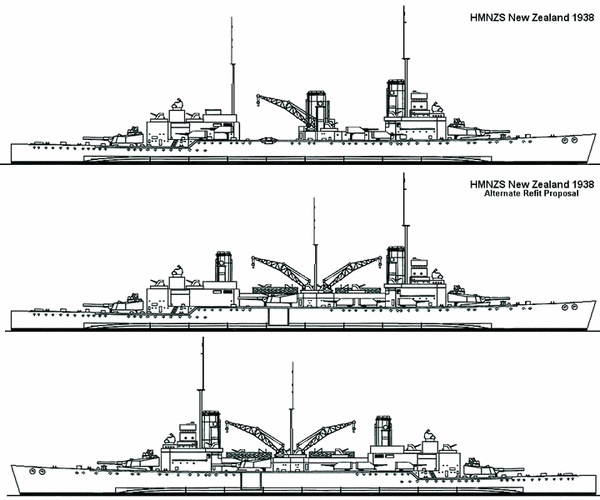Oberon_706
ACCESS: Restricted
- Joined
- 15 January 2021
- Messages
- 28
- Reaction score
- 30
You might want to know that the Admiralty did plan to build more Vanguards, using twin 15s from the R class, which were to have been scrapped, having been subject to only the most minimal improvements in the 1930s. In 1939-40 the Admiralty was much concerned over the possibility that the Japanese were building new battleships (but hadn't the slightest idea of what was involved), and it saw the Vanguards as the least painful way of augmenting the fleet in the East. For a time, for example, there was hope (in the Admiralty) that Australia would pay for or operate Vanguard herself. This was 1940-41, and you can find a hint of Australian interest in a battleship in the Australian official history. Of course nothing came of either the Australian fantasy or of junking Rs to get more Vanguards, because by the time that might have happened there were rather more urgent concerns.
On Hood, she was considered the first true fast battleship, and as such revolutionary, although some might see much the same thing in the German battlecruisers. What happened to her was extraordinary, as it appears that the fatal shell hit roughly lengthwise, where she -- and the QEs and Rs -- was poorly protected. It also seems to have had a rather long fuze delay, which was why it exploded in just the wrong place. After the action, there was an emergency analysis of the vulnerability of existing British ships, pointing up the transverse vulnerability of the QEs and Rs -- I do not remember for sure whether that also applied to the Nelsons.
On Australia, I doubt anyone in 1921-22 would have accepted that the Commonwealth was not integral with the British. I think there was even a legal link which made that clear. Nor were the Australians likely to have paid up to operate something that expensive. They found it difficult to finance their post-WW I navy for quite some time, despite their fear of the Japanese.
It surprises me that no one pointed out that, had work continued on the three other Hoods, they would have been in much the same position as the Lexingtons in 1921 -- incomplete, expensive, proceeding slowly. Wouldn't the RN have tried converting two of them into carriers, given the carrier clause of the Washington Treaty? And wouldn't that have afforded the RN the experience of running really large carriers like those the USN and the IJN used to learn what big carriers could do? They would have been a whole lot more survivable than Courageous and Glorious.
Re: Australia and the WNT - please see link below;
According to the Author, the government of Australia (if it chose) could likely have won excemption and retained HMAS Australia as an “Armoured Cruiser”. As others have said, a comprehensive reconstruction and modernisation would have been required to see her through to WW2, but she would have remained the most powerful ship in the South Pacific and Indian Oceans, requiring any any wishing to interdict trade beyond the dutch east indies to bring at least a bigger, newer battlecruiser to the fight.


